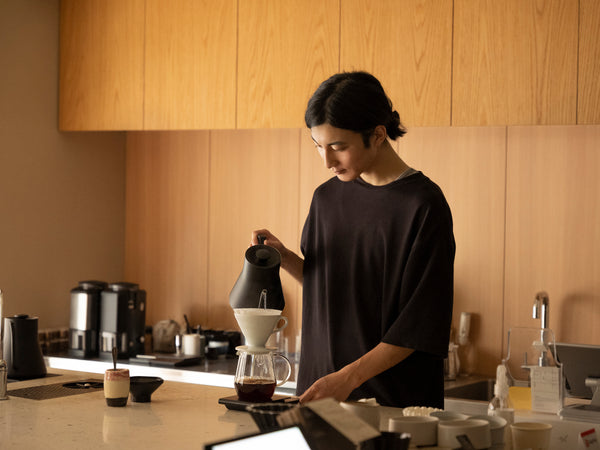Interesting v60 recipe posted by Tsubasa over at Kurasu in Japan. The basic approach is to bloom the coffee with room temperature water and finish brewing with boiling water. So it is very simple approach, not requiring any fancy equipment.
Experimenting with various brewing temperatures is something I have longed intended to, but rarely have done so. Not wanting to have a tepid cup of coffee that might need reheating. Have any of you tried such unconventional approach? I am thinking this recipe might also make a good iced coffee.

 kurasu.kyoto
kurasu.kyoto
<What you need>
- Coffee 14g (medium fine grind)
- Room temperature water 40g
- Boiling water 170g
<Recipe>
*Use room temperature water for the first pour only.
0:00 ~ 0:10 +40g
0:10 ~ 0:20 Agitate
0:45 ~ 0:55 +80g (Total: 120g)
1:15 ~ 1:30 +90g (Total: 210g)
1:25 ~ Stir the coffee bed 3 times along the dripper surface
Total Brew Time : around 3:00
***
Experimenting with various brewing temperatures is something I have longed intended to, but rarely have done so. Not wanting to have a tepid cup of coffee that might need reheating. Have any of you tried such unconventional approach? I am thinking this recipe might also make a good iced coffee.

A Home Brew Revolution: Recipe by Head Barista Tsubasa
Hi it's Tsubasa here! I've come up with a revolutionary home brew recipe and I'm excited to share it with you today. By the time you're finished with the blog, you'd be excited as I am in trying out this new recipe...Get your coffee beans ready! If you find the recipe and coffee impressive, call...
